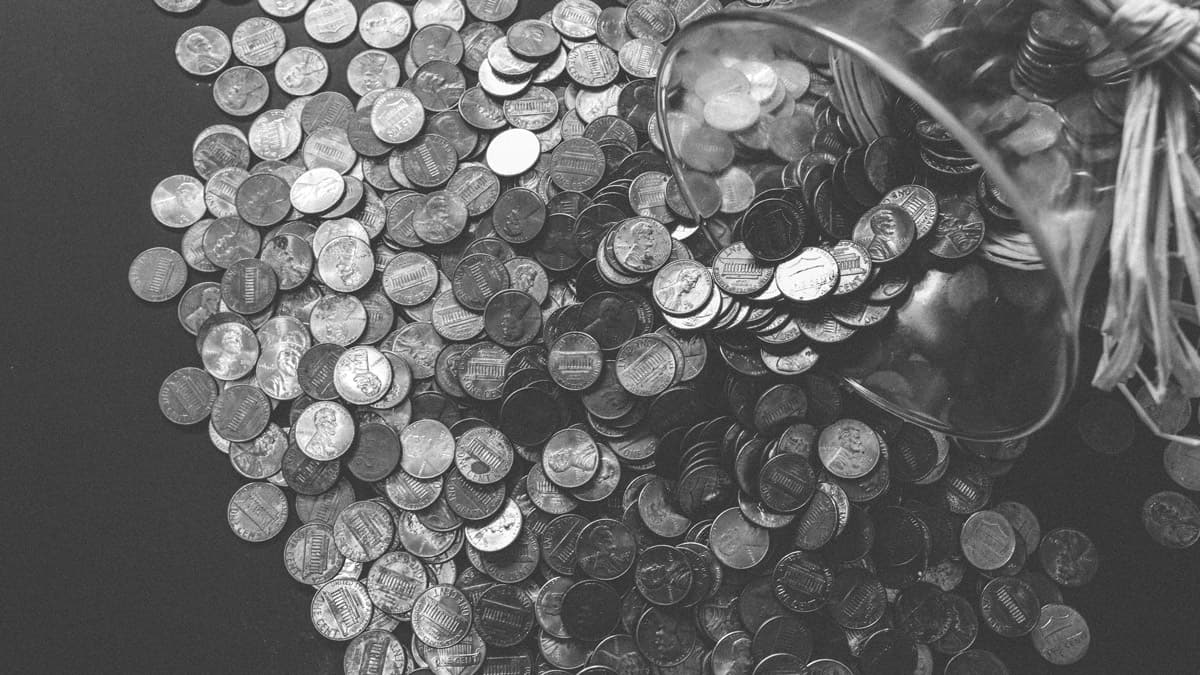Need Cash Today? How Cash Advances Work
Getting a cash advance may be quick and easy, but it’s expensive. Learn more about how they can help or hurt your business.

When a business needs money, it may be tempting to turn to a quick fix rather than taking the time and making the effort to apply for a loan from a bank or reputable microlender. While a cash advance is usually easy enough to get and you can have the funds almost immediately, you may be surprised just how much that convenience can cost you.
There are several different kinds of cash advances, so let’s break it down and see how they work.
Credit Card Cash Advances
This is exactly what the name suggests: getting money from a credit or charge card issuer. Simply put your card into an ATM or present it at a bank, and get cash. Instead of buying an item or a service, you are essentially buying money. You’ll usually be able to get an amount equal to the credit limit you have on the card, or a fairly high percentage of it.
Unlike when you buy an item with your card, however, you’ll be charged an extra fee for borrowing money with it, usually from three to five percent of the amount, with a minimum fee of $10.
You’ll also pay a higher interest rate on a cash advance than you would when you make an actual purchase. The average annual percentage rate of interest on a credit card cash advance is 24%, which is 6% higher than the average rate on purchases.
In a recent survey, creditcards.com found one company charging 36% interest on cash advances! Not only that, but the interest will begin (and compound, building on itself) on the day the cash is borrowed; there is no grace period before interest charges start.
You know those checks you get in the mail from your credit card company? Be very careful with them because they are another way to get a cash advance. Using those checks is the same as taking money from a cash machine or bank with your card.
For the reasons stated above (fees, high interest, and lack of a grace period), many credit counselors recommend using credit card cash advances only in case of emergency, or when other less-expensive options have proven impossible.
In general, it seems most people follow this advice. The government’s Consumer Financial Protection Bureau says only 3% of active cardholders used their cards for cash advances in 2012. But to give you an idea of how costly it is to do so, even with such a low usage rate, the fees for cash advances made up 20% of all fees collected by card issuers.
Merchant Cash Advances
With merchant cash advances, you don’t charge the money on your credit card; instead, a merchant cash advance company will give you money in exchange for taking a percentage of the daily credit and debit card income you earn from your business transactions. Because so many sales are put on credit cards, restaurants and small retailers tend to be the types of businesses that turn to merchant cash advances for funding.
The merchant cash advance company takes their cut from each day’s proceeds until you’ve paid them back, including the principal you borrowed and whatever fees they may have charged for the privilege. You don’t pay them yourself; they get the money directly from the processor that handles the card payments for your business.
Merchant cash advances are generally meant to be short-term loans. Depending on the terms, some will specify the time period in which they need to be paid back, while others will simply collect their percentage until you’re done paying them off. Usually, the payments will be taken right from the credit card revenue you bring in each day, although a new kind of merchant cash advance will allow the finance company to take money from a bank account you’ve linked to them for just that purpose.
Technically, merchant cash advances aren’t loans, you’re selling a portion of your future sales. This is important because the companies that make the advances may not be bound by all of the state usury laws that limit lenders from charging much higher fees and interest rates than banks. In effect, this also makes this area of funding largely unregulated, which is very much a “buyer beware” situation.
On the plus side, since payments to the cash advance company come right out of a business’s daily sales, cash flow may be a little easier to manage than having a fixed payment. You pay back more toward the advance when sales are high and less when sales are slow, which minimizes the impact of business swings.
Cash advances are typically processed much more quickly than traditional loans, so the money will be available faster, usually within a couple of days. And they are more dependent on the historical performance of a business than the owner’s personal credit score, so some companies may find them easier to qualify for.
Cost of a Merchant Cash Advance Loan
That said, they are expensive. For example, you would sell about $25,000 of future credit card sales to get an immediate lump sum payment of $20,000 from a finance company. The finance company would then take a portion of every credit card or debit card sale you make (generally from 5 – 15%) until the entire $25,000 is collected. In essence, that means you’re paying $5,000 for the $20,000 you need, or a hefty 25%. Depending on how quickly you pay it back, the annual percentage rate on a merchant cash advance can be as high as 60 – 200%, according to Leonard Wright, the “Money Doctor” columnist for The American Institute of CPAs.
Not only is it costly, the cash advance comes right off the top of your sales, leaving you with that much less to pay the rest of your bills. Depending on your profit margin, that means you’ll have to very carefully weigh how much cash you take against how large a percentage you’ll have to give up. You need to make sure you’re doing enough sales, with a wide enough profit margin, to pay back the amount you borrowed.
How Does a Merchant Cash Advance Work?
So, how do the advances work? While the requirements are less stringent than they are for bank loans, they do exist. Even though strict credit checks may not be required, companies that offer merchant cash advances will typically not lend to firms that have been in business for less than a year, or those that have filed for bankruptcy or have tax liens against them.
The finance company is primarily interested in your credit and debit card sales, because that’s how it’s going to be paid back. So the amount you can borrow will depend on how much volume you do on the cards.
The newer category of cash advances, ACH (Automated Clearing House), also serves customers that don’t do much in the way of credit card sales but still have daily income. These link directly to your bank account and debit your payback each day, week, or month. Each lending company has its own system to measure your sales and decide how much money it will advance.
Knowing how expensive this type of financing is, however, it is vitally important to not bite off more than you can chew. A reputable cash advance company will be very careful to understand your profit margins and work within them to make sure that the amount they’re taking from each sale doesn’t interfere with your ability to survive as a business. Of course they want to be paid back as quickly as possible, but they need to adjust their retrieval rate to something that works for both of you.
Again, because this business is not regulated like banks and other lenders are, there are no clear guidelines for the disclosure of all the fees and costs involved. Make sure you know exactly what the terms are before you sign a contract. Every aspect of the transaction should be clear and transparent. Ask for (and double check) the APR on the money you have to pay back, so you can compare the cost of this money to other funding that might be available. Even if your best option is a merchant cash advance, shop around between companies for the best terms. The field is very competitive.
Keep in mind, as well, that getting funding through a cash advance will not help your business build credit. Because they’re not defined as loans, merchant cash advances aren’t reported to credit bureaus.
There are some reasons a business might consider using a merchant cash advance. The industry’s trade group, the North American Merchant Advance Association, says some of the most popular uses have been for buying new equipment, inventory or seasonal merchandise, expansion or remodeling, paying off debt or taxes, and emergency funding.
Another Finance Option: Factoring
Long before cash advances against future credit card sales came about, they were available in a different form, through “factoring” or selling invoices or accounts receivables at a discount.
A factoring company basically buys your current invoices at a discount, giving you a cash advance on what’s owed to you minus a percentage it keeps as a fee. Companies will charge varying rates depending on your industry, the amount you’re factoring, and how long it will take to collect. Fees will generally be between 2% and 5% per month. Of course, on an annual basis, even these relatively low interest rates add up. At 2%, you’d pay an annual percentage rate of 24%, while at 5%, the figure soars to a 60% APR.
One potential downside to factoring is that your customers will need to send their payments to a third party rather than directly to you, which may be a signal to them that you are receiving funding in this manner. Still, some business owners prefer the certainty of working against current invoices rather than estimates or projections as in merchant cash advances.
As with merchant cash advances, you can usually have money from a factoring service within 24 to 48 hours after finishing the application process. It’s a little more complicated and time consuming than with merchant cash advances, because a factoring company will need to do its due diligence with your invoices to make sure there’s a high probability of being paid. Also, many factoring companies don’t want to deal with invoices that aren’t worth a significant amount of money. Generally, this is not a good option for restaurants, small retailers or service providers, as they wouldn’t generate large enough invoices to borrow against.
Cash Advances in Summary
In short, cash advances, whether they be from credit cards, merchant cash advance companies or factoring firms, may be a relatively quick and easy form of business funding, but they are VERY expensive. If you choose this route, understand exactly what you are paying, and consider doing so ONLY after you’ve exhausted other options from reputable lenders.









